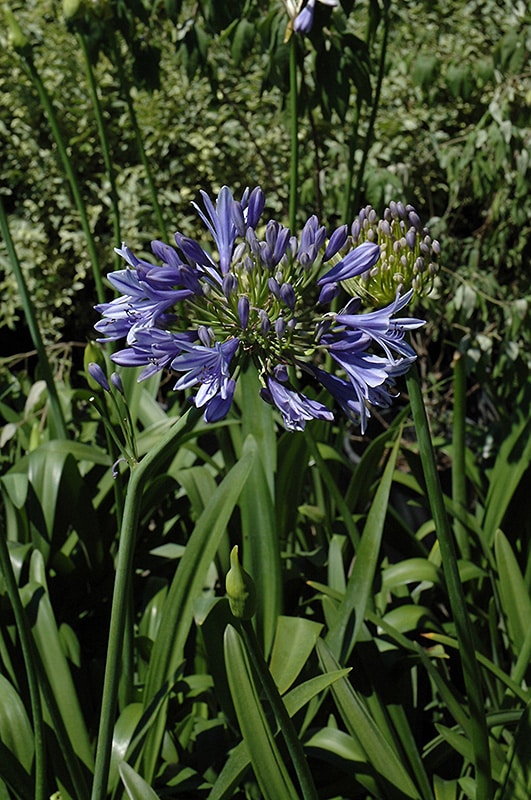Mastering the Art of Agapanthus Treatment: Important Actions for Healthy Growth and Lively Blossoms
In the realm of cultivation, the farming of agapanthus stands as a rewarding undertaking for those who seek to nurture these stylish blooming plants. With their striking flowers and graceful vegetation, agapanthus has actually captured the attention of garden enthusiasts worldwide. Nevertheless, accomplishing ideal growth and dynamic blossoms requires a nuanced method that includes numerous necessary steps. From choosing the ideal selection to grasping pruning techniques, the trip in the direction of growing growing agapanthus plants is complex and holds the essential to unlocking the complete possibility of these agricultural treasures.
:max_bytes(150000):strip_icc()/agapanthus-growing-guide-7368912_04-66a3f4cf245b4332b28954dd37c784f5.jpg)
Choosing the Right Agapanthus Variety

When choosing the appropriate Agapanthus range for your garden, consider aspects such as climate suitability, flower shade, and development habit. Agapanthus, typically called Lily of the Nile or African lily, is available in a selection of shades ranging from tones of blue and purple to white. Pick a bloom color that enhances your existing garden combination to develop a harmonious landscape. Furthermore, think about the environment in your region to ensure the Agapanthus range you select can grow in your specific conditions. Some varieties are a lot more tolerant of cold temperatures, while others prefer warmer environments. Understanding the growth behavior of different Agapanthus selections is vital for appropriate placement within your garden. Some varieties have a clumping growth habit, ideal for boundaries or containers, while others have a more dispersing nature, suitable for ground cover or mass plantings. By meticulously reviewing these factors, you can choose the excellent Agapanthus range to improve the beauty of your yard.
Suitable Growing Problems
Taking into consideration the optimal environmental requirements is important for successful Agapanthus cultivation. Agapanthus plants are delicate to chilly temperature levels and ought to be protected from frost throughout winter season months.
To make sure healthy growth and vibrant blossoms, plant Agapanthus light bulbs at a deepness of regarding 2-4 inches and space them 8-12 inches apart. Adding organic issue, such as garden compost, to the soil can improve drain and fertility, advertising durable root advancement. Mulching around the base of the plants helps keep dampness and subdues weed growth. Normal watering is important, particularly during the expanding season, to keep the dirt continually damp yet not waterlogged.
Watering and Feeding Tips
Keeping appropriate moisture levels and providing crucial nutrients are essential aspects in the care routine for Agapanthus plants. It is crucial to strike a balance when it comes to watering Agapanthus. If overwatered, these plants favor constantly moist soil but are prone to root rot. During the growing season, water deeply as soon as a week, guaranteeing the Resources soil is well-draining to avoid waterlogging. In hotter environments or throughout periods of drought, even more regular watering might be essential to maintain the soil equally wet. However, reduce watering in the winter to protect against waterlogged problems.
Feeding Agapanthus is important for advertising healthy and balanced development and prolific flowers. Use a well balanced fertilizer, such as a 10-10-10 formula, in the very early spring as new development arises. Repeat this application every 6-8 weeks throughout the expanding period. Prevent excessive fertilization, as it can lead to lush foliage at the cost of blooms. Always comply with the maker's guidelines for correct dilution and application approaches. By adhering to these watering and fertilizing suggestions, you can guarantee your Agapanthus plants thrive and create vivid, lasting blossoms.
Pruning Methods for Agapanthus
Trimming Agapanthus plants at the ideal times and with proper techniques is important for preserving their wellness and advertising optimum growth and flowering. The excellent time to trim Agapanthus is in late winter or early springtime before brand-new development emerges.
Deadheading invested blossoms can additionally redirect the plant's energy right into producing more blossoms instead than establishing seeds. If you want to collect seeds for propagation, leave some blossoms to completely dry and fully grown on the plant.
Bear in mind to use tidy, sharp tools to make accurate cuts and reduce the risk of presenting conditions. Agapanthus. Routine pruning will aid maintain your Agapanthus looking neat and healthy while top article making sure a plentiful screen of stunning blooms
Taking Care Of Common Pests and Illness
After ensuring correct pruning strategies for Agapanthus, it is necessary to deal with usual insects and diseases that can affect the health and vigor of these plants. One typical parasite that affects Agapanthus is the Agapanthus gall midget.
Furthermore, Agapanthus plants can experience from origin rot if they are planted in badly draining pipes dirt. By being alert and taking prompt action against bugs and conditions, you can assist your Agapanthus plants grow and generate vibrant blooms. Agapanthus.

Verdict
Finally, understanding the art of agapanthus treatment involves selecting the ideal range, offering optimal planting problems, appropriate watering and fertilizing, appropriate pruning techniques, and resolving common parasites and conditions. By complying with these vital actions, you can make sure healthy and balanced growth and vibrant blossoms for your agapanthus plants. Keep in mind to regularly monitor and keep your plants to promote their overall health and durability.
To make sure healthy growth and vibrant blooms, plant Agapanthus light bulbs at a deepness of regarding 2-4 inches and space them 8-12 inches apart. By adhering to these watering and fertilizing suggestions, you can guarantee your Agapanthus plants grow and create vivid, resilient blooms.
One usual insect that influences Agapanthus is the Agapanthus get more gall midge. In addition, Agapanthus plants can experience from origin rot if they are planted in inadequately draining pipes soil. By adhering to these essential steps, you can make sure healthy and balanced development and lively blossoms for your agapanthus plants.